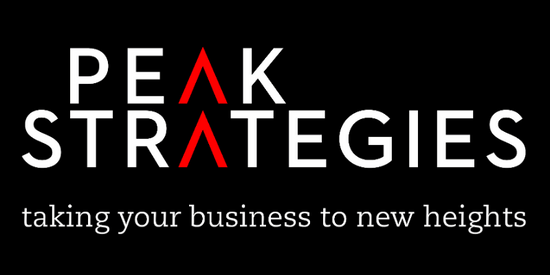 We all know that the giant supermarket chains spend millions of dollars on researching consumer behaviour. Nothing they do in the store is an accident. From the position of displays to the direction you walk around the store everything is planned to get you to buy more.
We all know that the giant supermarket chains spend millions of dollars on researching consumer behaviour. Nothing they do in the store is an accident. From the position of displays to the direction you walk around the store everything is planned to get you to buy more.
As a small retailer, you can learn from the big boys and use similar strategies to give your customers a good shopping experience encouraging them to buy more and, more importantly, come back. These 7 tips from marketing experts.
1. Make your shop windows shine
Ok, I know you're pressed for time, but vibrant window displays are vital.
Linda Cahan of Cahan & Co states that "many small retailers don't do window displays, letting customers simply look straight into the shop, and that's a mistake. As your eyes are the windows of your soul, store windows are the eyes of the shop." Each window should tell a story."
She suggests that small retailers create an appealing display
a. Use a single color theme to grab attention and communicate your store's image b. Avoid clutter because in retailing, space equals luxury. Items crammed together look cheap.
2. Make an arresting first impression
Slow your customers down with an eye-catching colourful display
Allow you the customer to see your shop. Notice how in Target you can see from one side of the store to the other. Shelves that customers can see over provides an unrestricted view of your store.
Avoid the mistake of many smaller retailers. Large shelving units near the front of the shop can block the view. If you have lower shelving units with short hooks and narrow shelves, then the store looks full with less stock. And that's a money saving strategy.
3. Steer customers to the right
Brian Dyches, chief experience officer of retail branding firm Ikonic Tonic in Los Angeles, reports that studies have shown that most people naturally look first left, then right as they enter a store and that shoppers usually then prefer to move right and walk counter-clockwise around the store. Via 7 Layout Secrets of the Big Retail Chains
4. Lead them somewhere
Do you have an isle that ends in a back wall? If you have, turn the wall into a compelling display and draw shoppers deeper into your store.
5. Have an angle
It may more efficient use of space to have the shelving units parallel to the shops exterior walls, but, if its possible angle the shelves to a central isle forming an arrow layout.
Only do this if you can keep the isles wide enough for your customers to get around easily.
What's their secret? Here are seven layout tips from experts who have worked with many major retailers.
6. Avoid long uninterrupted isles
Up to 20 percent of the store's merchandise is skipped over because long, uninterrupted isles don't get people's attention. So, if possible, create breaks and use them to grab people's attention.
7. Offer 'hugs.'
People are attracted to round and U-shapes, Dyches says. To get shoppers to stop at a display, try hanging a circular sign from the ceiling or placing a U-shaped background, such as a low wall with small sides extending forward, behind it. These make people want to stop and enter the space, which resembles a person extending their arms for a hug. Nordstrom makes great use of this technique in apparel displays, putting U-shaped partial walls behind mannequins on some displays, Dyches says. Source
Low-cost ways to improve your layout
2. Create a questionnaire and ask your employees and customers to give you feedback. 2. Hire a student from a local university to use your store as part of their research project 3. Find 2nd hand shop fittings to create displays in your store 4. Change displays regularly to maintain interest. Via 7 Layout Secrets of the Big Retail Chains
Now for 5 Habits of Success from Forbes.
Habit One: Prioritising is Key
Retailers are busy folks, with those not in the industry often misjudging just how much is on their to-do-lists. If you own a pharmacy, you already know that your list of tasks exceeds most other retail ventures.
With this in mind, successful retailers recognize the value in scheduling what is necessary to do and eliminating what is not. This also means recognizing that while some responsibilities are more enjoyable than others, all responsibilities must be prioritized to effectively run a successful retail business. Scheduling time limits and deadlines – even as your own boss – can help make retailers stay focused and on schedule, eliminating extra time spent where it shouldn’t be.
Habit Two: Letting go is a must
With a lot on a retailer’s to-do-list, who has time to dwell on the past? Sure, it’s easy to fall into this habit when mistakes are made, or opportunities are missed.
Retailers are bound to make poor inventory investments or have a slow month; however successful retailers analyze these situations as opportunities to learn from versus beat themselves up over.
One of the best ways to do this is lean on data... This often includes incorporating a point of sale (POS) system, using social media monitoring software and tracking customer loyalty. The more retailers know through hard data, the better they are in supporting their customers.
Habit Three: Staff training is vital
Stores spend a lot of money to open their doors and keep them open, which is why it always surprises me when a sales associate has no idea how to support the customers in their store.
The people of any business are the faces of that brand… whether they want to accept that role or not. As employers, it’s important to understand this reality and train associates to best represent their stores. Retailers who successfully run their businesses recognize the value in their associates and not only train them, but train them often.
The key is to invest time and dollars into your employees to reap the rewards of strong associates and as a result, healthy sales.
Habit Four: Knowing the competition is a priority
Know your competitors. Whether it’s your big box competitors or your local Main Street stores, successful merchants know who their competition is. And while it would be easy to simply read about their competition, savvy retailers take the time to actually visit the stores that compete with their business.
The following 7 points are a few of the main points savvy retailers analyse
1. What is their product assortment like? 2. What is the customer experience like? 3. What are their displays like? Can you learn from them? 4. Are they taking advantage of online shopping opportunities? 5. Do they have special events? 6. What is their dress code? 7. What is their customer service like?
Often, this type of routine analysis allows retailers to recognize new industry trends, missed opportunities, new strategies to compete for sales and other ways to stay afloat in the competitive retail marketplace.
Habit five: Shifting store inventory is "Okay".
Merchants who have become successful and more importantly, stayed successful, are willing to shift their inventory plans to accommodate their customers versus themselves.
When merchants listen to their customers, react to consumer trends, work with their vendors and respond to what their customers want, they can more efficiently buy inventory for their stores. Click to read the full article
Find an advisor specialising in the pharmacutical industry to safely help you grow your business
Because Peak Strategies specialise in the Pharmacy and Medical Industries we are uniquely placed to provide you with accurate industry specific data to help you grow your business.
Email or call John Thornett on 9315 3117 to find out how we can help you grow your pharmacuy business. for an appraisal of your pharmacy and how you can expand and improve sales.
Like what you're reading? Subscribe to our blog.

